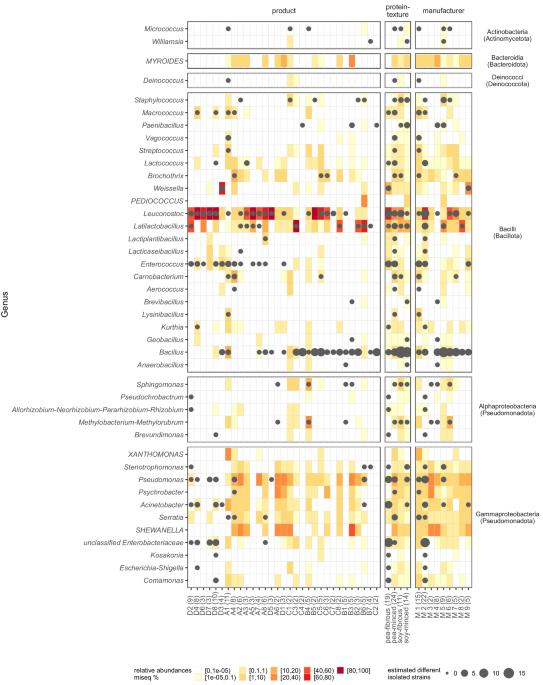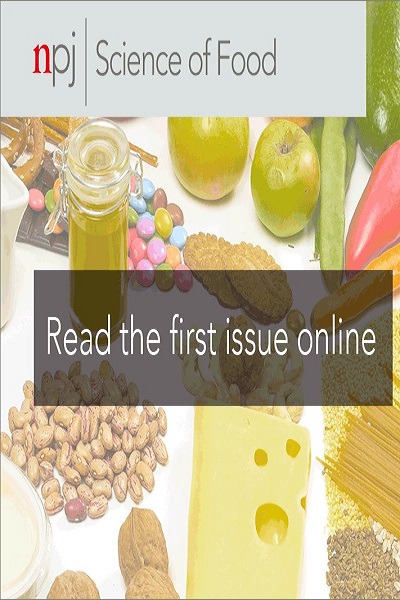植物肉类替代品的微生物群落结构。
IF 7.8
1区 农林科学
Q1 FOOD SCIENCE & TECHNOLOGY
引用次数: 0
摘要
动物性饮食的减少推动了市场对替代肉类产品的需求,目前正在催生新一代植物性肉类替代品(PBMA)。这些替代品是昙花一现,还是会长期存在,目前尚不清楚。在过去的几年里,销售额不断增长,产品种类不断丰富,但这一领域的出版活动目前主要局限于市场研究和食品技术主题。随着这些新产品越来越受欢迎,有关其安全性和营养风险的问题也随之出现。尽管所有受检产品在食用前都必须加热,但消费者对这类产品缺乏经验,因此我们希望对产品的安全性进行进一步研究。为了解决这些问题,我们研究了奥地利超市中的 32 种 PBMA。根据 16S rRNA 基因扩增片段测序,大多数产品以乳酸菌(白色念珠菌或拉氏乳杆菌)为主,α-多样性普遍较低。假单胞菌(如假单胞菌和雪旺菌)在另一部分产品中占主导地位。除了 LABs 外,通过培养方法还分离出了多种不同的芽孢杆菌,以及一些肠杆菌科细菌和潜在的致病菌。我们认为,特别是异发酵 LABs 的优势与产品的稳定性和质量有很大关系,有可能延长产品的保质期。虽然分离出的肠杆菌科细菌和潜在病原体数量较少,但它们仍然表明这些产品适合它们的存在。本文章由计算机程序翻译,如有差异,请以英文原文为准。

Microbial community structure of plant-based meat alternatives
A reduction in animal-based diets has driven market demand for alternative meat products, currently raising a new generation of plant-based meat alternatives (PBMAs). It remains unclear whether these substitutes are a short-lived trend or become established in the long term. Over the last few years, the trend of increasing sales and diversifying product range has continued, but publication activities in this field are currently limited mainly to market research and food technology topics. As their popularity increases, questions emerge about the safety and nutritional risks of these novel products. Even though all the examined products must be heated before consumption, consumers lack experience with this type of product and thus further research into product safety, is desirable. To consider these issues, we examined 32 PBMAs from Austrian supermarkets. Based on 16S rRNA gene amplicon sequencing, the majority of the products were dominated by lactic acid bacteria (either Leuconostoc or Latilactobacillus), and generally had low alpha diversity. Pseudomonadota (like Pseudomonas and Shewanella) dominated the other part of the products. In addition to LABs, a high diversity of different Bacillus, but also some Enterobacteriaceae and potentially pathogenic species were isolated with the culturing approach. We assume that especially the dominance of heterofermentative LABs has high relevance for the product stability and quality with the potential to increase shelf life of the products. The number of isolated Enterobacteriaceae and potential pathogens were low, but they still demonstrated that these products are suitable for their presence.
求助全文
通过发布文献求助,成功后即可免费获取论文全文。
去求助
来源期刊

NPJ Science of Food
FOOD SCIENCE & TECHNOLOGY-
CiteScore
7.50
自引率
1.60%
发文量
53
期刊介绍:
npj Science of Food is an online-only and open access journal publishes high-quality, high-impact papers related to food safety, security, integrated production, processing and packaging, the changes and interactions of food components, and the influence on health and wellness properties of food. The journal will support fundamental studies that advance the science of food beyond the classic focus on processing, thereby addressing basic inquiries around food from the public and industry. It will also support research that might result in innovation of technologies and products that are public-friendly while promoting the United Nations sustainable development goals.
 求助内容:
求助内容: 应助结果提醒方式:
应助结果提醒方式:


